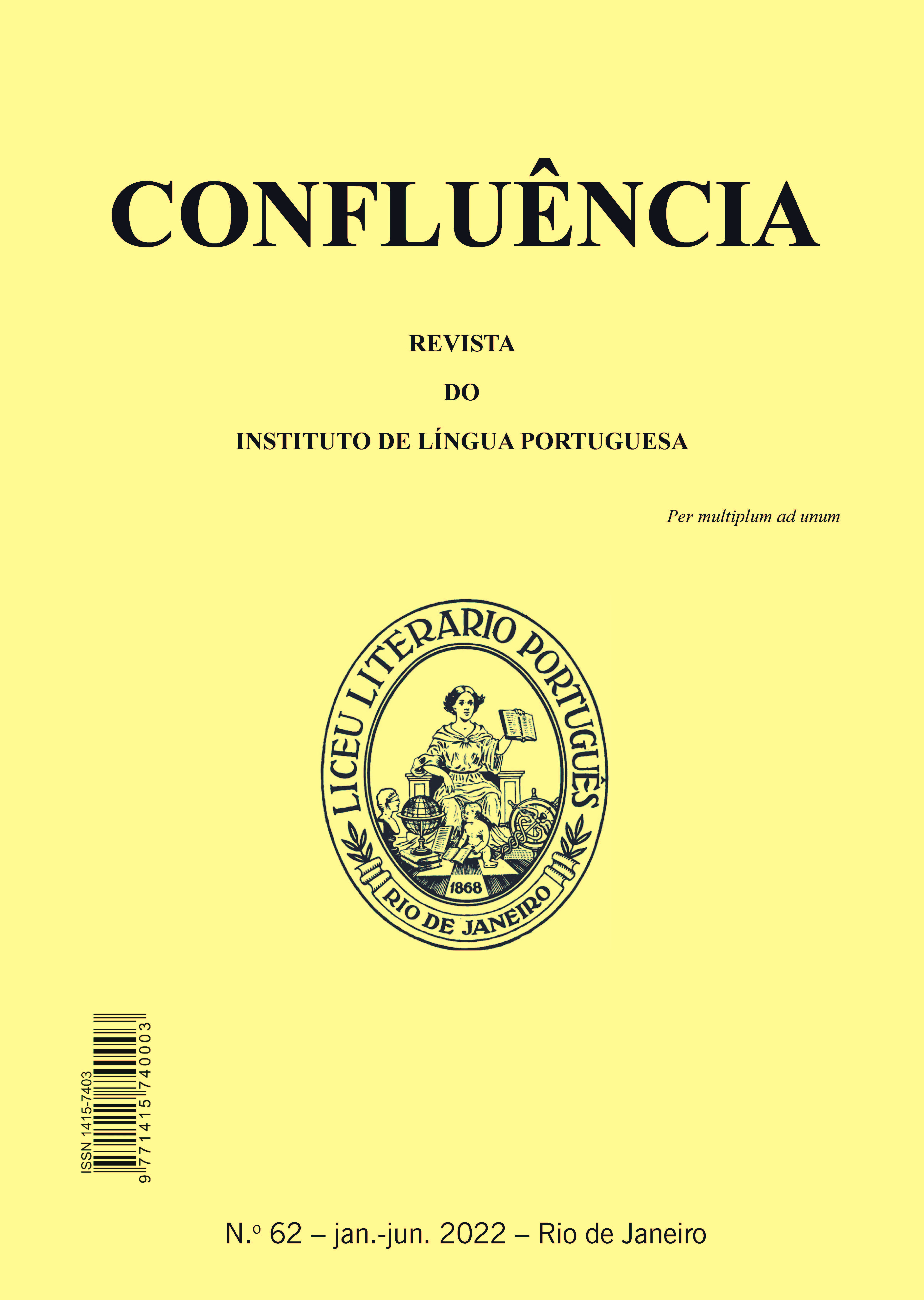The adágios of the Portuguese language in the work of Bento Pereira (1605-1681)
DOI:
https://doi.org/10.18364/rc.2022n62.537Keywords:
bilingual dictionaries, lexicography, paroemiologyAbstract
In this work, brief, concise statements with expressive force of moral character are studied, orally transmitted from generation to generation, summarized in most examples in simple bipartite or tripartite structures, a sentence or several sentences, or synthetic formulas such as an utterance or very heterogeneous groups of words, collected by Bento Pereira as Adagios da Lingoa Portuguesa (1655). Notes are drawn up on the origin of lexicography in Portugal, bilingual lexicography (Latin and Portuguese) and the relevance of Tesouros. Comments on the author’s biography and work are incorporated. We present an ordering by keywords that combines the alphabetical order of our dictionary writer and a possible ordering by subjects based on the lexical units documented in the formulation of each adágio, although it is usual that in many examples various themes intersect. This paper ends with the conclusions.
Downloads
References
CAMERON, H.: O conjunto lexicográfico Prosodia (1634-1750), de Bento Pereira, S.J. Évora: Publicações de Cidehus, 2018.
CASARES, J.: Diccionario ideológico de la lengua española. Barcelona: Editorial Gustavo Gili, , 1959.
COMBET, L.: Recherches sur le “Refranero” castillan. Paris: Les Belles Lettres, 1971.
DACL. Dicionário da Academia das Ciências de Lisboa. Lisboa: Verbo, 2001.
DELICADO, A.: Adagios Portuguezes reduzidos a lugares communs. Lisboa. Officina de Domingos Lopes Rosa, 1651.
FERNÁNDEZ-SEVILLA, J. Presentadores de refranes en La Celestina. In: Serta Philologica a Fernando Lázaro Carreter, I. Madrid, 1983, p. 209-218
GONÇALVES, F.: Contribuciones para el estudio de la Paremiología portuguesa: el Florilegio dos modos de fallar, e adagios da Lingoa Portuguesa (1655). In: Paremia n. 18, p. 153-162, 2009.
HAENSCH, G.; WOLF, L.; ETTINGER, S.; WERNER, R.: La lexicografía. De la lingüística teórica a la lexicografía práctica. Madrid: Gredos, 1982.
HENRÍQUEZ, Mª do C.: Las paremias en el ‘Tesoro’ de Sebastián de Covarrubias (1539-1611). In: Revista Confluência, Especial 30 anos , p. 78-147, junho 2021.
HOUAISS. Dicionário Houaiss da língua portuguesa. Rio de Janeiro: Objetiva. 2001 (1ª ed.).
MACHADO, J.P. : Dicionário etimológico da língua portuguesa. Lisboa: Livros Horizonte, 1977 (3ª ed.).
MADROÑAL, A.: Los refranes o proverbios en romance (1555), de Hernán Núñez Pinciano. In : Revista de Literatura (Rlit), n. 127, 2002, p. 5-39.
NÚÑEZ DE TOLEDO, H. (1555): Refranes de la lengua castellana. Madrid: Ediciones Guillermo Blázquez, 2 vols., 2001.
SEVILLA MUÑOZ, J. Propuesta de sistematización paremiográfica. In: Revista de Filología Románica, n. 9, 1991, p. 31-39.
VERDELHO, T.: As origens da Gramaticografia e da Lexicografia Latino-Portuguesa. Aveiro: Instituto Nacional de Investigação Científica, 1995.
VERDELHO, T.; SILVESTRE, J.: Dicionarística portuguesa. Inventário e estudo do património lexicográfico. Aveiro: Universidade de Aveiro, 2007.
Downloads
Published
Issue
Section
License
Copyright (c) 2022 Maria do Carmo Henríquez

This work is licensed under a Creative Commons Attribution-NonCommercial 4.0 International License.
The author who publishes in this journal agrees to the following terms: The author maintains the copyright and grants the journal the right of first publication, with the work simultaneously licensed under the Creative Commons Attribution License that allows the sharing of the work with acknowledgment of the authorship and initial publication in this journal. The author is authorized to take additional contracts separately, for non-exclusive distribution of the version of the work published in this journal (eg publish in institutional repository or as a book chapter), with acknowledgment of authorship and initial publication in this journal. The author is allowed and encouraged to publish and distribute his work online (eg in institutional repositories or on their personal page) at any point before or during the editorial process, as this can generate productive changes, as well as increase the impact and citation of the published work.








